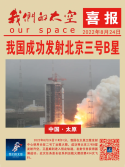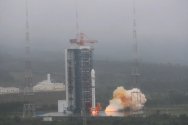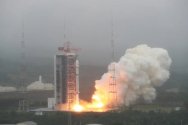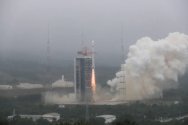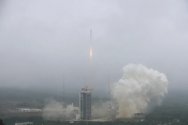A recount of the Jilin-1 surveillance satellite constellation project as it reaches the first milestone:
On Aug 10, a CZ-6 rocket shot 16 Jilin-1 satellites to space. There are now 70 Jilin-1 surveillance satellites in orbit.
The constellation can now visit any point on earth 23 to 25 times per day. The ground station makes use of AI to automate processing of satellite data. Ground features such as buildings, woods, roads, waters, etc. and a variaty of crops can be recognized and categorized automatically with 95% accuracy.
Since the first 4 Jilin-1 satellites launched into space in 2015, the newer generations of Jilin-1 satellites keep getting lighter, smaller. The newer ones also cost less and are faster to build.
By end of the 14th five-year plan, the project is expected to have all the 138 satellites in orbit.
8月10日12时50分,我国在太原卫星发射中心使用长征六号遥十运载火箭,将眉山“天府星座”(“吉林一号”高分03D35-41星)、云遥一号04-08星(“吉林一号”红外A01-05星)等16颗卫星发射升空,卫星顺利进入预定轨道,发射任务圆满成功。
16颗卫星入轨后,将与在轨的54颗“吉林一号”卫星组网。至此,“吉林一号”在轨卫星数量增至70颗,标志着“吉林一号”星座第一阶段建设任务圆满完成。
自2015年10月一箭四星发射成功以来,“吉林一号”星座工程已进行21次发射。
贾宏光分析说,传统的“平台加载荷”设计,载荷和平台界限分明,载荷要根据平台的设计调整,卫星的重量、体积难以灵活安排。而星载一体化技术增加了载荷设计的灵活性,重量、体积可通过设计进一步下降。“同样一个亚米级卫星,我们把重量控制到400多公斤,卫星研制成本大约在8000万元。”
空间节省后,卫星“体重”大幅降低。据悉,“吉林一号”高分03星“体重”已降至40公斤,重量只有第一代卫星的1/10,但降重量不降指标,分辨率始终保持在0.75米的高水平。
“重量降低,火箭运载成本随之减少。过去能发射一颗星的价格,如今可以发射10颗星。”贾宏光说。
邹吉炜说,实施批量化生产,要科学合理分解卫星形成过程,具体可分为单机部组件生产、系统测试和总装及环境试验三个环节,总装及环境试验环节形成脉动流水化模式,进行批量化生产、测试,可进一步解放人力、降低成本。
邹吉炜表示:“过去在卫星系统测试环节,一颗星需要两个人、两个月完成,如今6颗星并行测试,一个人、一个月即可完成。生产效率大大提升。”
贾宏光介绍,“吉林一号”星座可对全球任意地点实现每天23到25次重访,可为农林生产、环境监测、智慧城市、地理测绘、土地规划等各领域提供高质量的遥感信息和产品服务。
这意味着,依托“吉林一号”遥感数据,长光卫星利用人工智能算法,实现了全国地表分类的精准化、自动化更新,可以在线完成建筑、道路、水体、林木以及不同类型农作物的自动识别,识别精度超过95%。
“吉林一号”星座正按计划扩大规模。贾宏光说,预计“十四五”期间,“吉林一号”将实现138颗卫星组网。“届时,‘吉林一号’卫星星座的服务能力将大幅提升,为用户提供更丰富、更高效的遥感信息服务,为大众生活带来更多便利。”





